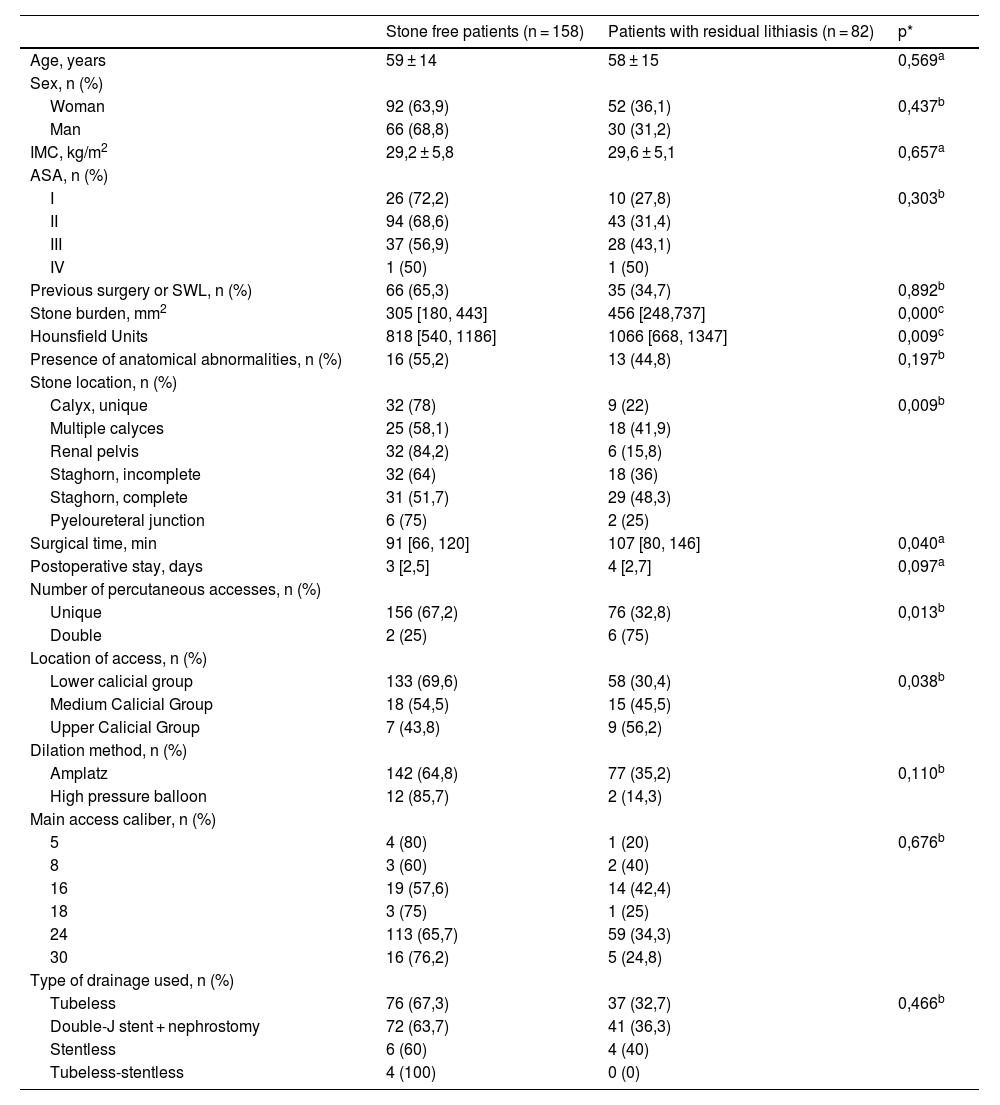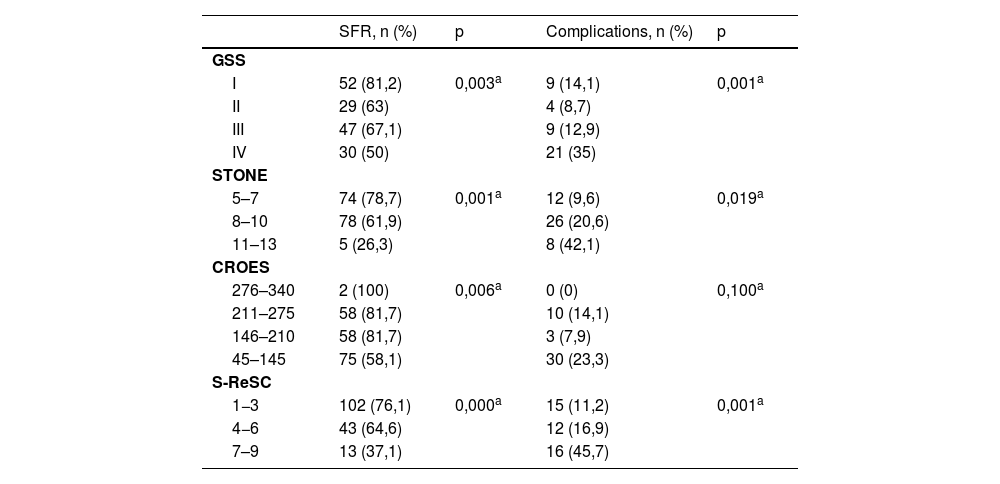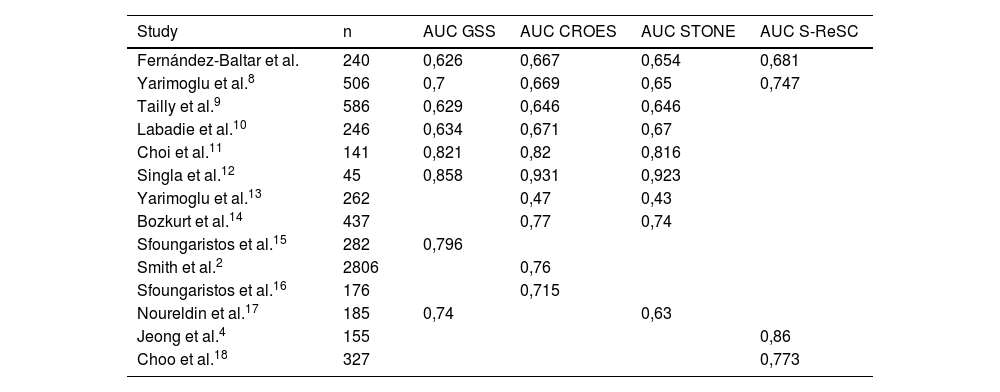To analyze the predictive capacity of the nephrolithometry scoring systems (GSS, STONE, CROES and S-ReSC) and stone surface regarding success and complications following percutaneous nephrolithotomy (PCNL).
MethodsWe studied 392 patients who had undergone PCNL in our center. Only patients with a non-contrast CT (n = 240) were finally included for analysis. The predictive capacities for success and complications of the different scoring systems were evaluated using ROC curves and their area under the curve (AUC).
ResultsRegarding success, the S-ReSC system had the highest predictive capacity with an AUC of 0.681 (95% CI 0.610−0.751), followed by the CROES with 0.667 (95% CI 0.595−0.738), the STONE with 0.654 (95% CI 0.579−0.728) and finally the GSS with 0.626 (95% CI 0.555−0.698). The stone surface as a single variable had an AUC of 0.641 (95% CI 0.565−0.718). As for complications, the S-ReSC had the highest AUC with 0.664 (95% CI 0.57−0.758), followed by STONE with 0.663 (95% CI 0.572−0.755), GSS with 0.626 (95% CI 0.555).−0.698) and CROES with 0.614 (95% CI 0.518−0.7). The stone surface alone had an AUC of 0.616 (95% CI 0.522−0.715).
ConclusionThe nephrolithometry scales analyzed show a moderate predictive capacity for success and complications in patients undergoing PCNL in our center. Moreover, stone surface as an independent variable demonstrates moderate predictive capacity for both outcomes.
Analizar la capacidad predictiva de los sistemas de puntuación de nefrolitometría (Guy’s Stone Score [GSS], Stone size, Tract length, Obstruction, Number of calyces, Essence [STONE], Clinical Research Office of the Endourological Society [CROES] y Seoul National University Renal Complexity Scoring System for Prediction of Stone-Free Rate after PCNL [S-ReSC])y la superficie litiásica en cuanto a éxito y complicaciones en nefrolitotomía percutánea (NLP).
MétodosEstudio de 392 pacientes sometidos a NLP en nuestro centro. Solo se incluyeron para el análisis los pacientes con una tomografía computarizada (TC) sin contraste (n = 240). Las capacidades predictivas de éxito y complicaciones de los diferentes sistemas de puntuación se evaluaron mediante curvas operativas del receptor (ROC) y su área bajo la curva (ABC).
ResultadosEn cuanto al éxito, el sistema S-ReSC tuvo la mayor capacidad predictiva con un ABC de 0,681 (IC 95% 0,610–0,751), seguido del CROES con 0,667 (IC 95% 0,595–0,738), el STONE con 0,654 (95 % IC 0,579–0,728) y finalmente el GSS con 0,626 (IC 95% 0,555–0,698). La superficie litiásica como única variable tuvo un ABC de 0,641 (IC del 95%: 0,565–0,718). En cuanto a las complicaciones, el S-ReSC tuvo el ABC más alto con 0,664 (IC 95% 0,57–0,758), seguido de STONE con 0,663 (IC 95% 0,572–0,755), GSS con 0,626 (IC 95% 0,555).–0,698) y CROES con 0,614 (IC 95% 0,518–0,7). La superficie litiásica como variable independiente tuvo un ABC de 0,616 (IC del 95%: 0,522–0,715).
ConclusiónLas escalas de nefrolitometría analizadas muestran una moderada capacidad predictiva de éxito y complicaciones en pacientes sometidos a NLP en nuestro centro. Además, la superficie litiásica como variable independiente demuestra una capacidad predictiva moderada para ambos resultados.












